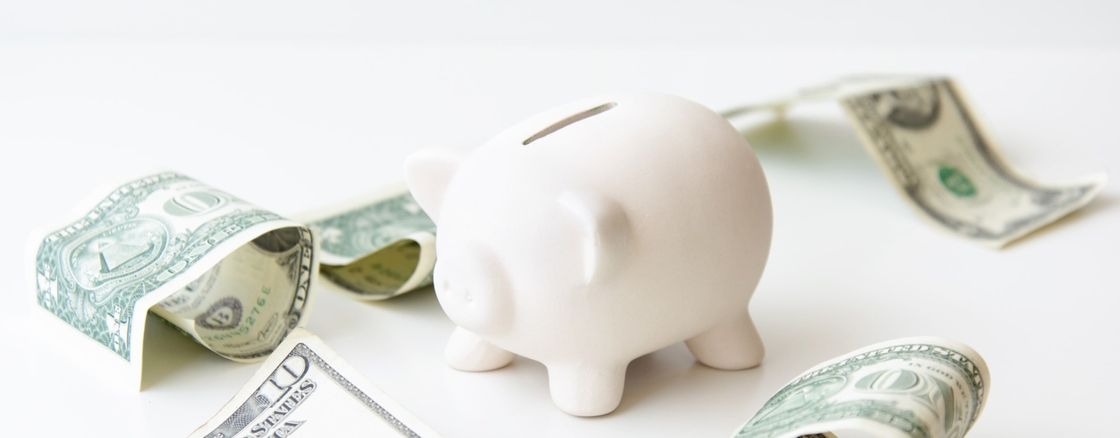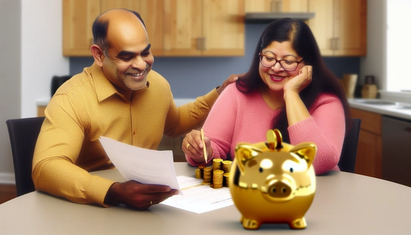A Guide to Calculating Your Total Loan Cost
Written by:
Ashley Altus
Ashley Altus
Certified Financial Counselor
Ashley Altus is a writer and certified financial counselor through the National Association of Certified Credit Counselors.
See full bio
Fact Checked by:
Dan Silva
Dan is the Vice President of Marketplace Lending at Own Up. Throughout his career, he has held executive leadership positions in the mortgage and banking industry.
See full bio

When it comes to borrowing money, one of the most important considerations is the total cost of a loan. You’ll want to know how it will impact your finances in both the short and long run. This involves understanding what both your monthly payments and long-term costs will be.
"In the short term, a loan can provide necessary capital, but also introduces a new monthly expense," says Jeff Rose, CFP. "In the long run, while loans can aid in building credit, the accrued interest means you'll pay more than the initial borrowed amount, impacting your financial flexibility."
Understanding the cost of the borrowing can help you make well-informed financial decisions that suit your financial obligations and goals.
Let’s start by digging into some common loan terminology you’ll need to know when it comes to the total cost of a loan.
Loan Terms
Below are several loan terms that will help you understand what you are actually signing on for when you borrow money to buy a home.
Principal
The amount of your borrowing upfront is the loan’s principal. It does not include fees or interest. For example, if you purchased a home for $300,000 and put down a down payment of $10,000, you would need to borrow $290,000 from a lender. That $290,000 would be the principal loan amount.
Interest
The loan interest rate is the cost a financial institution charges for borrowing money. Interest can be fixed, which means it stays the same throughout the life of the loan, or variable, which means it may change and can greatly impact repayment terms. The amount you pay in interest each month will most likely show up as a dollar amount on your monthly mortgage statement.
Loan Fees
Most lenders require borrowers to pay additional costs to cover the administrative and processing costs of the loan. Application fees and origination fees are two common types of loan fees you may encounter.
Annual Percentage Rate (APR)
For an accurate depiction of the cost of borrowing, review a loan’s APR. The APR includes the interest and loan fees shown as a percentage of the yearly cost of borrowing.
Loan Term
This is the period of time a borrower has to pay back the loan. Loan terms can vary based on the type of loan. A personal loan may have a repayment term of several years, but it’s common to see a mortgage loan with a repayment term of 15 or 30 years. Typically, a shorter term means less interest paid over time and vice versa for a loan with a longer term.
Loan Amortization Schedule
Loans that have fixed installments follow an amortization schedule. A portion of your payment goes toward paying down the principal and a portion pays down interest. The majority of your initial payments will go towards paying down interest. As the loan amortizes (as the amount you owe decreases), a larger share of the payment will contribute to the principal balance until the loan is paid in full. Fixed-rate mortgage loans, personal loans, and auto loans are all loans that follow amortization schedules.
Types of Loans
There are different kinds of loans, depending on your needs and the purpose of the loan.
"Don't forget to explore different loan types and terms, as selecting the right fit for your financial situation can save you bucks in the long run," Rose says.
For the most part, you can divide loans into one of two categories, either secured or unsecured.
Secured Loans
Secured loans are tied to collateral, which is a valuable asset that a borrower pledges as security for the loan. When taking out a secured mortgage, the collateral will be the home you are purchasing with the loan. Common types of secured loans include auto loans and mortgage loans. If a borrower fails to make repayments on the asset, the lender can take the collateral to recoup their losses.
Unsecured Loans
Unsecured loans aren’t tied to collateral. If a borrower defaults on an unsecured loan, they could face negative repercussions to their credit score, which could make borrowing more expensive in the future. Credit cards, personal loans, and student loans are all classified as unsecured loans.
3 Ways to Reduce the Cost of Borrowing
Below are three potential ways to lower the amount of money you will need over time in order to purchase a home.
1. Boost Your Credit Profile
Before taking out any loan, knowing where your credit score falls on the FICO scoring system can help you assess your lending options.
"Reducing borrowing costs starts with a solid credit score," says Rose.
Your credit history can significantly impact the cost of borrowing. Lenders view borrowers with a strong credit report as less risky.
Lenders have more confidence that a borrower with excellent credit will stick to a loan’s repayment terms. As a result, borrowers with a strong credit profile can receive more favorable terms.
The good news is that if you have bad credit, you can turn it around. Improve your credit score by paying off credit card debt, making on-time debt payments, and keeping a low credit utilization ratio. (In other words, don’t use all your credit at once and try to keep a low balance.)
2. Make Additional Loan Payments
Paying extra on your loan can reduce the interest you’ll owe over the life of the loan. For example, let's say you took out a $15,000 personal loan for a home repair with a 7% annual interest rate and loan term of 4 years. Over the life of the loan, you would expect to pay $2,241 in interest. The total loan cost would equal $17,241.
Now let's say you decided to add an additional $100 to your monthly payment. You'd save about $550 in interest payments. With an even larger loan amount and longer loan term, the difference can be even greater.
While extra loan payments can save you money, you’ll want to read the fine print on your loan agreement. For example, some mortgage lenders charge homeowners a prepayment penalty for paying off their loan early. Typically, this only relates to borrowers who pay off the entire balance too soon, but it could also impact those who pay off a large amount all at once.
3. Compare Lenders
With all the different lenders and loans in the financial marketplace, it benefits borrowers to shop around. For the most accurate picture of the total cost of a loan, don’t fixate too much on a loan’s monthly payment, but instead compare APRs.
How Much Loan Can I Afford?
It's important that you feel that you can comfortably afford your debts. For a healthy financial life, it’s important to stay within your means when it comes to borrowing. Take a hard look at your budget to see the impact a new loan can have on your finances.
If you aren’t sure how the current market conditions, interest rates, and various loan terms will impact your loan, using a loan calculator can help guide you. Loan calculators allow you to enter a variety of cost variables so you can gauge an idea of what a monthly payment may look like for you. Try playing around with different scenarios and mortgage schedules, for example, the cost of taking out a 30-year mortgage with a 5% interest rate on a $300,000 home compared to a 15-year mortgage.
It’s also important to know what your down payment will look like before purchasing the home. Not only will it impact the amount you have to borrow, but if your down payment doesn’t reach a certain threshold, you may have to add private mortgage insurance to the monthly expenses on your bill.
The Bottom Line
Whether you’re taking out a mortgage loan to finance your dream home or a student loan to pay for higher education costs, be sure to calculate the true cost of the loan. The type of loan, repayment terms, lender, and your personal financial situation all play a part in the cost of borrowing. For a general estimate of monthly payments, use a loan calculator.


